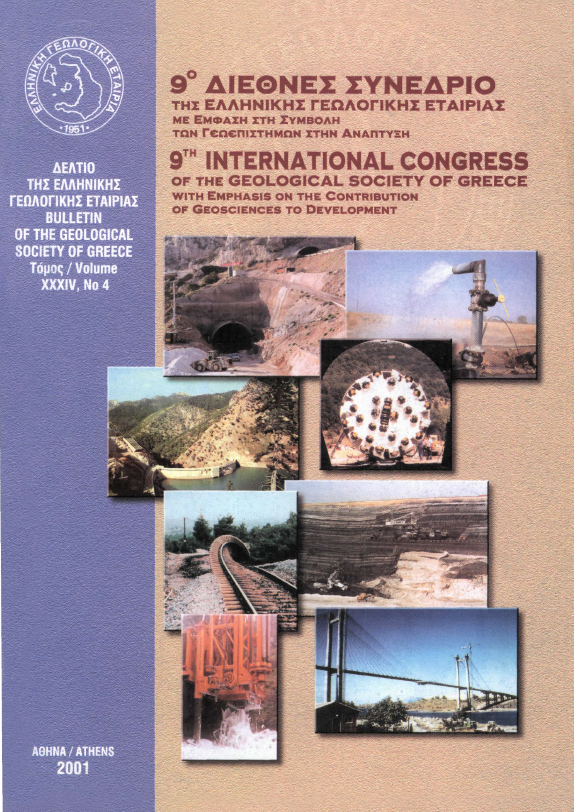A study of the self-potential field produced by a polarised inclined sheet in an electrically homogeneous and transversely anisotropic ground

Abstract
In the present paper, the self-potential (sp) field is studied, which is produced by an inclined sheet (thin dyke) in an electrically homogeneous and transversely anisotropic ground. At first, the mathematical expression for the sp anomaly is deduced, by integration of the formula for the self-potential field produced by a point pole in a transversely anisotropic medium (Skianis & Herntmdez 1999). Then, the behavior of the sp curve is studied, for various angles of schistosity. The whole anomaly may be displaced along the horizontal axis and deformed in terms of amplitude and shape. Particular emphasis is given on the enhancement and suppression of the positive center of the self-potential, which depends on the values and orientations of the schistosity angle of the ground and the dip angle of the inclined sheet. These deformations of the sp anomaly, may introduce significant errors in the calculation of the parameters of the polarized body, if ground anisotropy is not taken into account. Therefore, new methodologies have to be developed, for a reliable quantitative interpretation of self-potential field data. In this paper, a direct interpretation method is proposed, which consists of two steps: In step one, the parameters of the inclined sheet are determined, assuming a homogeneous and isotropic ground. In this stage, any quantitative interpretation method, referred in the international bibliography, may be used. Secondly, the true parameters of the dyke are estimated, by a set of transformations in which the anisotropy coefficient and the schistosity angle are introduced. In order to apply this method, a priori information about ground anisotropy should be available, by dc geoelectrical and geological investigations. The efficiency of the method was tested on a synthetic model. In the first stage, the quantitative interpretation method of Murty & Haricharan 1985 was employed. In the second stage, the calculated parameters of the first step, served as input values of the transformations, and the real parameters of the inclined sheet were estimated. There was a good agreement between the parameter values of the synthetic model and the ones found by the proposed method. The results and conclusions of this paper, may be useful in detecting sulfide mineralization deposits or graphite.
Article Details
- How to Cite
-
ΣΚΙΑΝΗΣ Γ. Α., ΠΑΠΑΔΟΠΟΥΛΟΣ Τ. Δ., & ΒΑΪΟΠΟΥΛΟΣ Δ. Α. (2001). A study of the self-potential field produced by a polarised inclined sheet in an electrically homogeneous and transversely anisotropic ground. Bulletin of the Geological Society of Greece, 34(4), 1343–1350. https://doi.org/10.12681/bgsg.17226
- Section
- Geophysics

This work is licensed under a Creative Commons Attribution-NonCommercial 4.0 International License.
Authors who publish with this journal agree to the following terms:
Authors retain copyright and grant the journal right of first publication with the work simultaneously licensed under a Creative Commons Attribution Non-Commercial License that allows others to share the work with an acknowledgement of the work's authorship and initial publication in this journal.
Authors are able to enter into separate, additional contractual arrangements for the non-exclusive distribution of the journal's published version of the work (e.g. post it to an institutional repository or publish it in a book), with an acknowledgement of its initial publication in this journal. Authors are permitted and encouraged to post their work online (preferably in institutional repositories or on their website) prior to and during the submission process, as it can lead to productive exchanges, as well as earlier and greater citation of published work.



